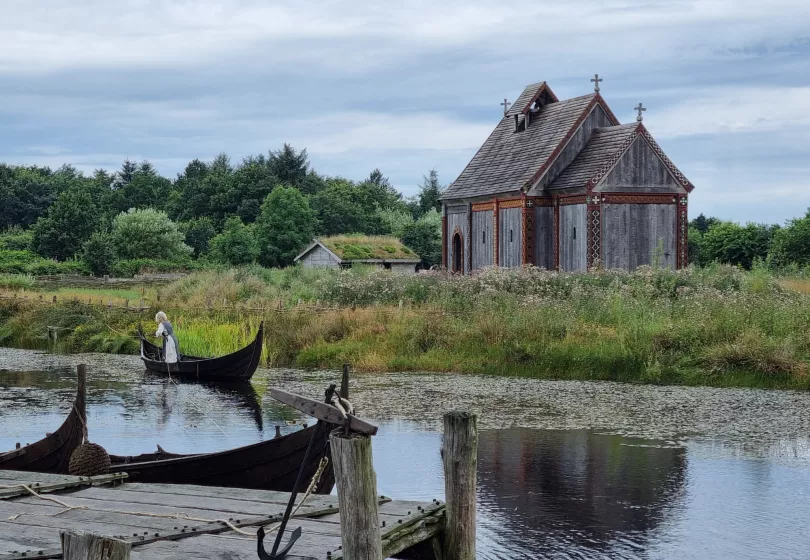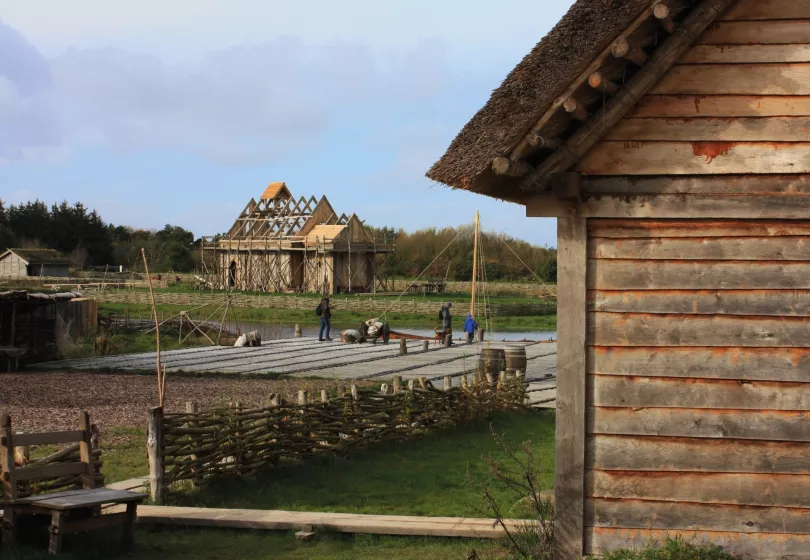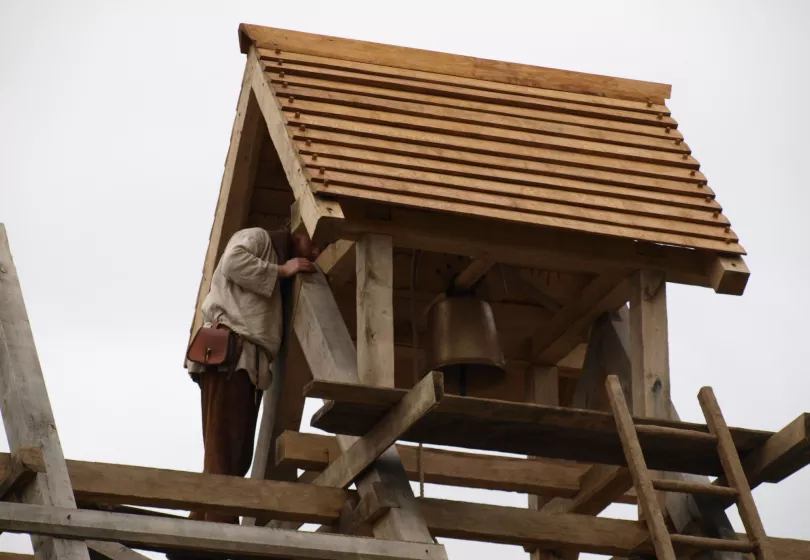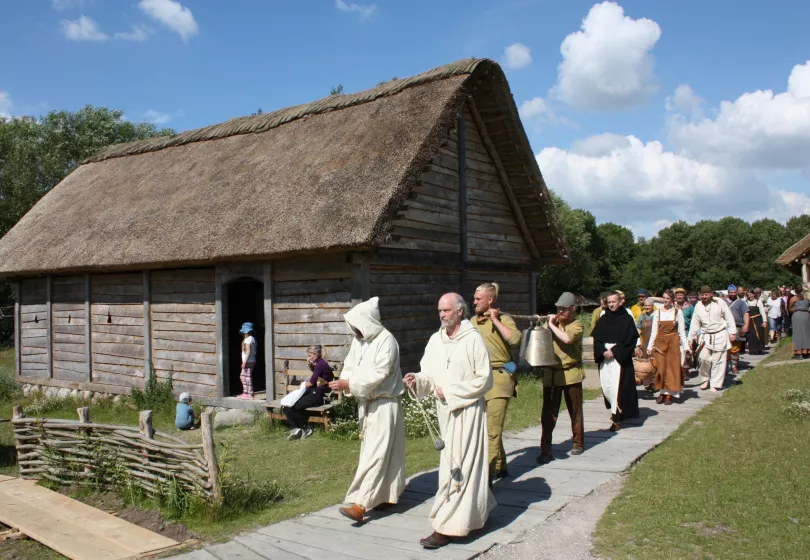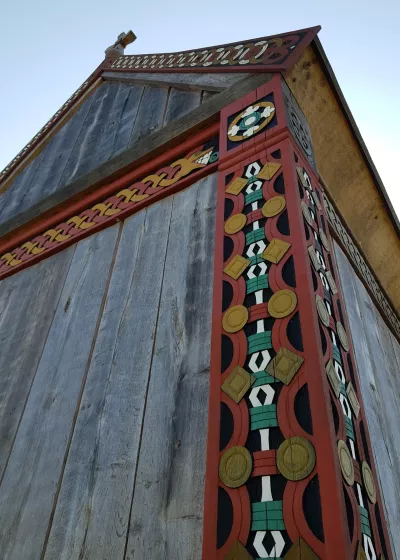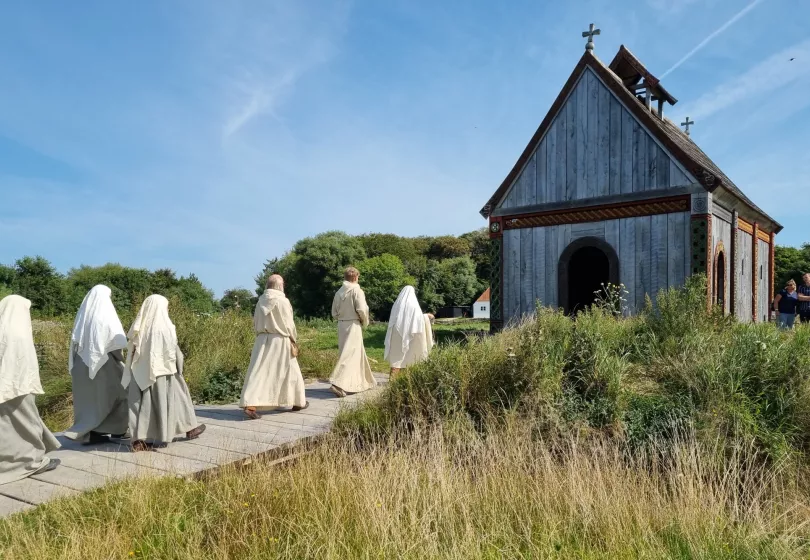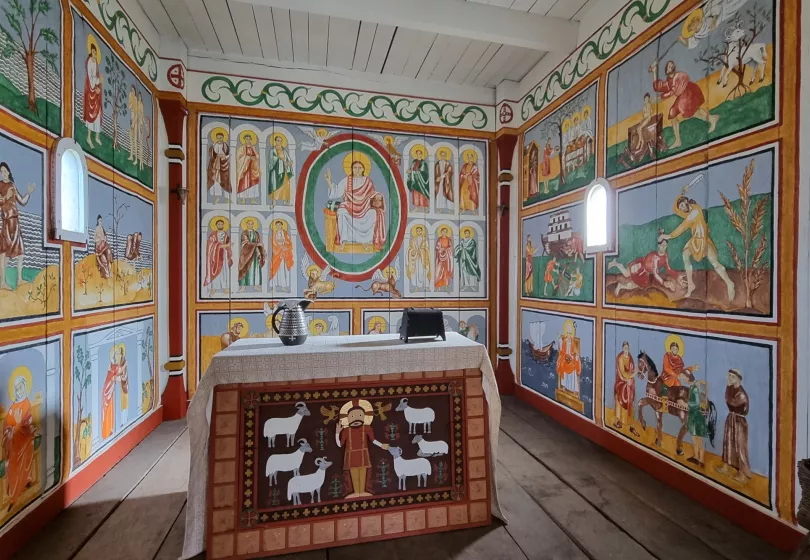Knowledge update
The latest excavations at the cathedral in Ribe have revealed surprising new knowledge of early Christianity in Denmark. Many Christian graves from the 9th century were found and analyses show that the deceased had been brought up locally. This proves that at least 100 years before King Harold Bluetooth had the Jelling-Runestone erected and proclaimed his conversion of the Danes to Christianity, Christian Danes already existed.
From paganism to Christianity
Ribe's close commercial relations to Dorestad and the area along the Rhine meant that many Ribe-inhabitants knew of Christianity. Among the foreign traders visiting Ribe must also have been many Christians who appreciated the possibility to visit a church and meet with fellow believers. Some traders wouldn't even do business with pagans. In other words: in the middle of the 800s, there were several good reasons for the Danish King Horik to grant the bishop and missionary Ansgar permission to build churches in the main trading settlements. First in Haithabu (Hedeby) and about 10 years later in Ribe.
The majority of the people still kept to the old Norse gods including Odin and Thor. However, because of the vast number of Christian graves found, the archaeologists estimate the Christian parish in Ribe and hinterland to have included up to several thousand people. The size of the churchyard also indicate that the church in Ribe probably was the main church for a large territory, maybe even all of Jutland.
The remains of the church built by Ansgar in 855-860 AD are most likely hidden under the present Ribe Cathedral.
The reconstruction of the Ansgar Church
Even though there is no actual finds of Ansgar church, there still is sufficient general knowledge of church building in the 9th century for Ribe VikingeCenter to make a qualified reconstruction of Ansgar Church, 860 AD.
The size and construction of the church is based on a find in Tostedt near Hamburg where Ansgar was bishop. The decoration is done in typical styles of the time.
The exterior carvings are based on the styles of the Viking Age as expressed on jewellery and fittings. The interior decoration has a more Christian look and is taken from southern European styles.
The Ansgar Church was consecrated in May 2018.
Watch our documentary on the construction of the Ansgar Church here:
The church bell
The bell in the Ansgar Church is a copy of the Hedeby Bell which was discovered in 1978 in the waters at Hedeby (Haithabu), a Viking trade centre. The bell dates back to the 900s and thus is the oldest churchbell found in Northern Europe. We do no know whether it fell overboard during transport, or whether it was intentionally thrown into the water. We also don't know which church it was intended for, but in the middle of the 9th century, Ansgar was given the king's permission to build churches in Hedeby and Ribe. The discovery of the Hedeby Bell says something about the early introduction of the new religion and how churches were provided with bells in order to ring for church services.
The bell in the Ansgar Church was cast at the Viking Museum in Hedeby, where the original bell is on display. The volunteer artisans involved in the project also brought the bell to Ribe by cart and Viking ship. Watch our documentary on the journey of the church bell here:

